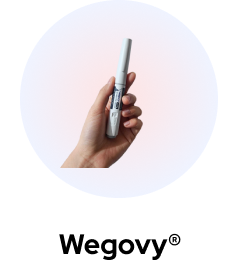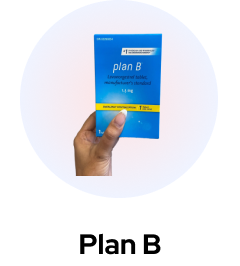Rogaine, scientifically known as minoxidil, stands as a key player in the battle against hair loss, particularly in addressing pattern baldness in both men and women.
Renowned for its capability to foster hair growth, Rogaine operates through a mechanism that enhances blood flow to hair follicles, thereby revitalizing them and promoting the growth of thicker, healthier hair.
Additionally, we’ll help you understand the side effects associated with Rogaine, ranging from common issues like scalp irritation to rarer, more severe reactions, providing essential insights for users to manage these effects effectively.
What Is Rogaine?
Rogaine, known scientifically as minoxidil, is a popular treatment for hair loss, particularly pattern baldness in men and women. It is one of the few proven solutions that can actually promote hair growth:
- Active Ingredient: Minoxidil is Rogaine’s active ingredient. It works by widening blood vessels and opening potassium channels, which allows more oxygen, blood, and nutrients to the hair follicle. This process helps revive and extend the growth phase of the hair cycle, encouraging hair regrowth in thinning areas.
- Mechanism: By improving blood flow, minoxidil stimulates dormant hair follicles, increasing their size and restoring the growth of thicker hair over time.
Rogaine is available in various forms, and the application process is straightforward:
- Forms Available: Rogaine comes in two main forms: a topical solution and a foam. Each form has specific concentrations of minoxidil—typically 2% and 5%.
- Preparation: Start by ensuring the scalp is clean and dry. This helps in the optimal absorption of the product.
- Application: Apply the recommended amount using the dropper (for the solution) or the cap (for the foam) directly to the areas of thinning hair.
- Consistency: Use your fingers to gently spread the Rogaine over the hair loss area and allow it to dry completely.
- Frequency: It is typically applied twice daily, once in the morning and once at night, to maintain steady levels of minoxidil on the scalp.
Proper Use of Rogaine
For effective application of Rogaine, follow these detailed steps:
- Time Your Applications: Apply Rogaine twice a day as recommended—once in the morning and once in the evening. This routine helps maintain a constant level of minoxidil in the scalp.
- Measure Correctly: Use the dropper (for solution) or cap (for foam) to apply only the prescribed amount; more is not necessarily better.
- Apply to Dry Scalp: Make sure your hair and scalp are completely dry before applying. This prevents dilution and helps ensure that the treatment targets the scalp directly.
- Wash Your Hands: Before and after applying Rogaine, wash your hands thoroughly to avoid unwanted hair growth on other parts of the body.
- Avoid Hair Drying Techniques: Do not use a hairdryer to speed up the drying of Rogaine, as it can decrease the effectiveness of the treatment.
The success of Rogaine is largely dependent on consistent use and patience.
It’s important to understand that hair growth takes time, and the effects of Rogaine will not be immediate. Regular application as directed is crucial, and it may take several months to see visible improvement. Continuing the treatment even if you do not notice immediate changes is essential during this period. Consistency helps accumulate the beneficial effects of minoxidil on the scalp and hair follicles, eventually leading to noticeable hair growth.
For those new to Rogaine or looking to ensure they are applying it correctly, it’s essential to follow precise usage guidelines. To learn more about the recommended application techniques and tips for getting the most out of your treatment, visit our detailed guide on how to use Rogaine effectively.
Common Side Effects of Rogaine
Using Rogaine can come with several common side effects, which include:
- Scalp Irritation: Including itching, redness, or flaking of the scalp.
- Unwanted Hair Growth: Hair may appear on the forehead or other areas close to where Rogaine is applied.
- Dizziness: Some users may experience lightheadedness or dizziness.
- Weight Gain: Uncommon, but some users report facial and extremities swelling.
- Changes in Hair Texture or Color: Hair may grow back softer or with a different color initially.
Scalp Irritation
To reduce scalp irritation from Rogaine, consider the following tips:
- Moisturize: Use a gentle, hypoallergenic moisturizer to soothe the scalp.
- Mild Shampoo: Wash your hair with a mild shampoo to prevent further irritation.
- Avoid Harsh Chemicals: Steer clear of hair products containing alcohol or other irritants that can exacerbate scalp sensitivity.
Increased Hair Shedding Initially
It’s not uncommon for some individuals to experience increased hair shedding shortly after beginning Rogaine treatment. This phenomenon typically lasts a few weeks, indicating that the minoxidil works. The initial shedding occurs because minoxidil pushes more hair follicles into the growth phase, causing old hairs to fall out and make way for new growth.
Changes in Hair Texture or Color
Changes in hair texture or color can occur when using Rogaine. These changes are generally temporary:
- Texture Changes: New hair might be softer and finer than existing hair because it is in an early growth stage. Over time, the texture can normalize as the hair matures.
- Color Variations: Initially, regrown hair may appear lighter in color. This is due to the new hair’s immature pigment cells. The hair should return to its natural color as it grows and matures.
While addressing hair loss with Rogaine, it’s also important to consider other health factors that can impact hair growth. Discover the role of Vitamin D in maintaining healthy hair and potentially reducing hair loss by exploring our in-depth article on Vitamin D and hair loss. This could offer complementary insights into holistic hair health management alongside Rogaine use.
Less Common Side Effects of Rogaine
While most people using Rogaine do not experience severe side effects, some less common issues may occur, including:
- Headache: Some individuals may experience headaches after using Rogaine.
- Dry or Flaky Scalp: Prolonged use can lead to dryness or flaking of the scalp.
- Rapid Heartbeat (Tachycardia): Minoxidil can occasionally cause an increase in heart rate.
- Blurred Vision: A rare side effect that might be related to changes in blood pressure.
- Increased Facial Hair Growth: Especially noted around the cheeks and forehead due to accidental spread of the product.
Headache
If you experience minor headaches after applying Rogaine, consider the following:
Managing minor headaches caused by Rogaine can often be addressed with simple measures. Ensure you are well-hydrated throughout the day, as dehydration can worsen headache symptoms. Over-the-counter pain relievers like acetaminophen or ibuprofen can be effective, but always use these medications according to the package instructions or your healthcare provider’s recommendations. If headaches persist, consider consulting with your healthcare provider to rule out other causes or to adjust your treatment plan.
Dry or Flaky Scalp
To alleviate a dry or flaky scalp from Rogaine use, you can try the following home remedies and over-the-counter products:
- Moisturizing Shampoos: Use shampoos designed for dry scalp, which can help moisturize and relieve flaking.
- Scalp Treatments: Scalp masks containing ingredients like aloe vera or coconut oil can soothe and moisturize.
- Limit Hair Washing: Decreasing the frequency of hair washing can help retain natural scalp oils.
- Avoid Harsh Styling Products: Styling products with alcohol can exacerbate scalp dryness.
Rapid Heartbeat (Tachycardia)
An increase in heart rate after using Rogaine, while uncommon, should not be ignored:
Rapid heartbeat experienced from using Rogaine can be alarming. If you notice that your heart rate is consistently elevated shortly after application or if you experience other symptoms like shortness of breath or chest discomfort, it’s important to seek medical attention immediately. These symptoms can indicate systemic absorption of minoxidil at higher levels than intended, requiring professional evaluation and management.
Rare Side Effects of Rogaine
Rogaine can occasionally cause rare side effects that are serious and require immediate medical attention:
- Severe Allergic Reaction (Anaphylaxis): Includes symptoms such as swelling of the face, lips, tongue, or throat, difficulty breathing, and hives.
- Chest Pain: Any occurrence of chest pain needs urgent evaluation as it may indicate a serious health issue.
- Dizziness or Fainting: These can be signs of low blood pressure or other serious conditions.
- Swelling of Hands or Feet: This might indicate fluid retention or heart problems.
- Sudden Weight Gain: Unexpected weight gain can be a sign of systemic effects of the medication.
Severe Allergic Reaction
Recognizing the signs of a severe allergic reaction is crucial for Rogaine users:
If you experience symptoms such as difficulty breathing, swelling of the tongue, lips, or throat, or develop hives after using Rogaine, these could be signs of a severe allergic reaction. Such reactions require immediate medical attention. Call emergency services or go to the nearest emergency room. Always carry information about your medical conditions and treatments whenever possible to aid healthcare providers in giving the correct treatment quickly.
Chest Pain
Chest pain associated with Rogaine use is a serious concern:
If you experience chest pain after applying Rogaine, it is essential to treat this as a potentially serious medical condition. Stop using the product and seek immediate medical attention. Chest pain can indicate cardiac issues, especially in patients with pre-existing heart conditions, and requires prompt evaluation by a healthcare provider.
Dizziness or Fainting
For those experiencing dizziness or fainting while using Rogaine, consider these safety tips:
- Sit or Lie Down: If you feel dizzy or lightheaded, sit or lie down immediately to prevent falls and injuries.
- Hydrate: Ensure you are adequately hydrated, as dehydration can contribute to dizziness.
- Avoid Sudden Changes in Position: Rise slowly from sitting or lying positions to prevent a drop in blood pressure.
- Consult a Doctor: If dizziness or fainting episodes continue, consult your healthcare provider for further evaluation.
Signs and Symptoms of Excessive Medicine Absorption
Excessive absorption of Rogaine can lead to systemic effects, recognizable by the following signs:
- Rapid Heartbeat: Consistently high heart rate can indicate too much Rogaine absorption.
- Dizziness or Lightheadedness: These symptoms may appear if the blood pressure is affected.
- General Weakness: Feeling unusually weak or fatigued can be a sign of systemic effects.
- Swelling of Extremities: Swelling in the hands or feet may occur.
Precautions While Using Rogaine
When using Rogaine, it’s important to take certain precautions to ensure safe and effective use:
- Avoid Eye Contact: Ensure the solution does not get into your eyes, as it can cause irritation.
- Wash Hands After Use: To prevent spreading the medication to other parts of the body.
- Keep Away from Children: Store the product out of reach of children.
- Follow Application Guidelines: Apply as directed to minimize side effects and maximize effectiveness.
Discussing all medications you are taking with your healthcare provider is crucial because Rogaine can interact with other drugs:
It is essential to inform healthcare providers about all medications you are currently using, including over-the-counter drugs, prescriptions, and supplements. This information helps prevent potential drug interactions and ensures that your treatment for hair loss is as safe and effective as possible.
When to Consult a Healthcare Provider
Knowing when to consult a healthcare provider can help manage Rogaine use safely:
- Severe Side Effects: If you experience symptoms like chest pain, severe allergic reactions, or persistent dizziness.
- No Improvement: If there is no noticeable improvement after several months of use.
- Pregnancy or Breastfeeding: Consult before using Rogaine if you are pregnant or breastfeeding.
- Underlying Health Conditions: If you have heart disease or other serious health issues.
Key Takeaways
- Understand Side Effects: It’s important to be aware of both common side effects like scalp irritation and rare ones like rapid heartbeat. Immediate medical attention is required for severe reactions.
- Proper Use and Consistency: Proper application and consistent use of Rogaine as per the instructions are crucial for its effectiveness. Consistency in application ensures the best results over time.
- Consult Healthcare Providers: Before starting Rogaine, consult with healthcare providers, especially if you have health conditions or are taking other medications. This helps ensure the treatment is safe and effective for your specific situation.
Frequently Asked Questions
Can Rogaine Cause Permanent Side Effects?
Rogaine typically does not cause permanent side effects. Most side effects, such as scalp irritation, are reversible and usually resolve after discontinuing the treatment. However, it is important to consult a healthcare professional for any persistent or severe symptoms.
How Should Rogaine Be Stored and Disposed of?
Store Rogaine at room temperature, away from heat and direct sunlight, in a place inaccessible to children and pets. For disposal, do not pour it down the drain or throw it in the trash. Instead, follow local guidelines for medication disposal, which can often be obtained from a pharmacy or local waste management authorities.
What Alternatives Exist if Rogaine is Not Suitable for Me?
If Rogaine is not suitable, alternatives include prescription medications; hair transplant surgery; low-level laser therapy (LLLT); corticosteroid injections for alopecia areata; and natural remedies and lifestyle changes such as using essential oils, scalp massages, improving diet, and reducing stress. Consult a healthcare provider to choose the best option based on your specific health needs and hair loss condition.












 (US)
(US)